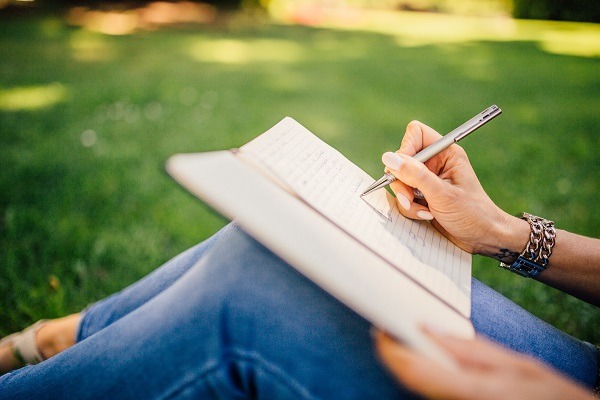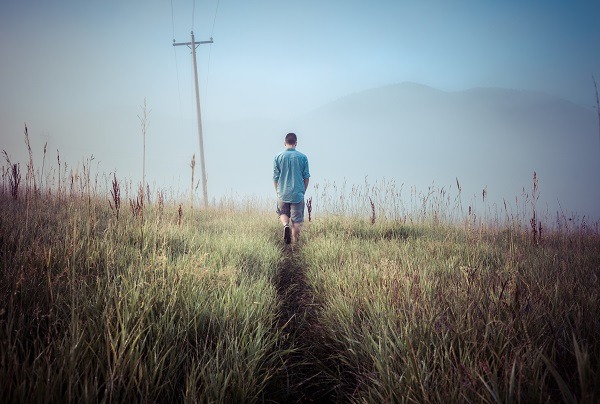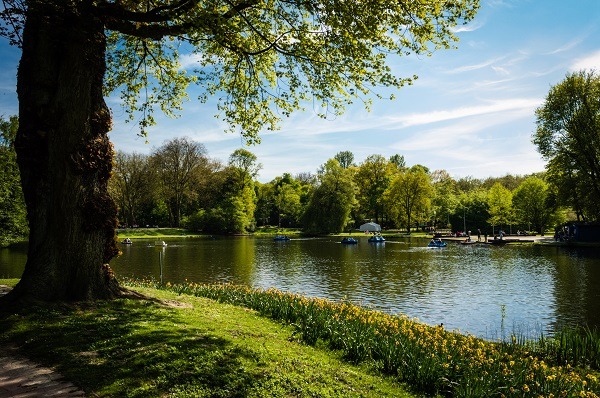In our visual world of cinema and photography, setting often takes a back seat in novels. But even when constructed through words, visuals are a powerful story element.
Whether creating a fantasy world from scratch or using the current world as your backdrop, it is important to work your setting into your story effectively.
The first question is, obviously, where. But to truly master this story element, you need to consider the why, what, when and how as well.

Enhance your story with setting
So, why is setting such a big deal?
The experience of immersing oneself in a new place is becoming the domain of cinema, and it is still a powerful tool for today’s writer.
Hook your reader
Fiction is all about transporting a reader to another place – making them forget the paper in front of them, the pillows beneath them. And mastering setting is key to achieving this.
You need to establish a strong sense of your fictional reality from chapter one. (But not necessarily in chapter one of your first draft.)
Characters and plot can draw a reader in, but can only offer them an observer role. A good, strong setting, however, gives readers a chance to become active participants in the story.
A good example is J. K. Rowling’s Harry Potter series. From Diagon Alley to the Burrow to the beloved hallways of Hogwarts, her setting truly invites readers to participate in the story. Fans long for that invitation to Hogwarts, and become attached to the house they would be sorted into.
To achieve this kind of immersion, you need two things: an interesting setting, and a strong portrayal of your locations so your readers feel as if they could step right into your world.

Convey a deeper meaning through setting
Setting is not a standalone part of your story. It enhances other elements, such as plot, theme and mood.
Tolkien picked the location of each plot point very specifically. In doing so, he developed themes such as the safety of home and the preciousness of the little things.
The further Frodo and the Fellowship of the Ring pass from the Hobbits’ home territory, The Shire, the more danger they encounter in the landscape.” —Bridget McNulty
Tolkien’s setting choices were not necessary for these themes to be present. But they add an extra depth that makes his story linger in readers’ minds long after they’ve put the book down.
Convey a deeper emotion
Clichéd as it may sound, giving an unhappy character a rainy day is quite effective. Conversely, if your character feels isolated in their emotion, give them a bright, sunny day amidst their sorrow.
Setting is one of the primary tools through which writers develop mood in their scenes. And, with the focus on your characters and plot, clichéd setting choices tend to go unnoticed.
Having your Romeo and Juliet moment in a secret garden, for example, will help immerse your reader in the romantic mood. You could also develop emotional connotations with locations yourself through previous plot points or your language.

Broaden your view of setting
The next question is what setting actually includes. More than just a location, buildings and trees, it can also be time, culture, atmosphere and people.
Explore different levels of your setting
There are different levels of setting, and the deeper you go, the more immersive your story will be. Imagine your character is in New York City, modern day. Now in Central Park. In the snow. On New Year’s Eve. Minutes before midnight.
Every level adds something new, drawing your reader closer to the character’s world. It also means that, while your entire story may be set in one café, the setting of each scene can be different.
You may not always need to go deep in order to create the right atmosphere for your scene. All choices come down to what is best for your story.
Establish setting through means other than description
Don’t just build your setting with what first comes to mind, and don’t rely on straight description to convey every aspect of your setting. If you really think about the atmosphere you need, setting can be created through almost anything.
For example, people are part of setting, as the opening page of Charles Dickens’ Bleak House shows:
Foot passengers, jostling one another’s umbrellas in a general infection of ill-temper, and losing their foot-hold at street-corners, where tens of thousands of other foot passengers have been slipping and sliding since the day broke…”
Another clever way to build setting is through dialogue. Consider how people and characters talk in each location. Is there a change in accents, or formality?
Finding ways to weave setting through all your different elements will help you create a full world without paragraphs of description.

Focus on setting at the right time
In some ways, setting is a constant part of your story. After all, your characters are always existing somewhere. But practically, you need to know when to focus on setting in a scene.
Keep the reader in mind at all times
As well enhancing the reader’s experience by complimenting the plot and characters’ moods, setting has a practical role. It lets the reader know where the character is.
Whenever you change scene, there are a few important flags you need to write to make sure your reader is with you. One of these is your character’s location.
Whether between scenes or in the middle of a scene, as soon as your character changes location, you should describe the new surroundings. Readers are disorientated when, two pages later, characters are not in the place they imagined.

Describe through interaction
Too many paragraphs of description can bore your reader. To keep them engaged, have your characters interact with and explore your setting.
She might trail a hand along the banister, sink down into a velvet couch, or wiggle her toes in the soft carpet.” —Emma Johnson
In your first draft it is usually more efficient to write block description. But as you edit, try to break these up amongst character action.
When doing this, remember to keep important details as close to the beginning of your scene as possible. Your reader still needs to know where they are.
Cut unnecessary locations
The saying ‘less is more’ is true to many aspects of writing, including setting. The more locations your characters jump between, the less familiar and comfortable your reader is with each scene.
That doesn’t mean your story can’t have dozens of locations. It comes down to what your story needs. Less is not more if you take away too much.
Remember that setting enhances other story elements, such as plot and mood. So, for each new location, identify what it brings to your story and whether or not you can achieve the same thing with a pre-existing location.

Write setting like a pro
The final step is how to actually write setting – by no means an easy task. Not only do you need to powerfully evoke the experience of being in another place, but you need to do it with minimal words.
Once you’ve got your baseline set with all your research notes, it’s time to get into the nitty-gritty of writing setting.
Ground your reader with basics
So your reader doesn’t feel lost, it is important to give them some basics to hold onto in each scene. Unless, of course, you want them to feel lost – for example, if that’s how your character is also feeling in that particular scene.
When you introduce a new location, orient your reader with a place they are already familiar with. For example, you might state that your character is in a park that is three streets away from their house.
It also helps the reader to know the scope of the location. Is the park large, or crammed between office buildings? By giving defined limits to your location, the reader feels as if they can fully grasp it.

Captivate your reader with new details
You have likely heard how powerful sprinkling a few details into your description is. But you shouldn’t just pick any details.
The best details to use are those your reader wouldn’t know about, or are unlikely to have noticed or experienced in their own lives.
In the dark the old man could feel the morning coming and as he rowed he heard the trembling sound as flying fish left the water and the hissing that their stiff set wings made as they soared away in the darkness.” —Ernest Hemingway, The Old Man and the Sea
Hemingway’s description has captivating imagery. The power of his details lies in the new experience it gives the reader. Seeing flying fish in the stillness of pre-dawn, when it is quiet enough to hear them, is a rare pleasure that most readers won’t have experienced themselves.
Finding your details
When trying to think of interesting details, it is helpful to leave your writing space and go out into the world with open eyes. Actively look for things you find interesting, that you have never noticed before.
Remember to engage with all five senses when looking for details, not just sight. Then you can narrow down on the details that your narrator would notice.

Tips for writing richer settings
There are a few quick yet effective ways to spice up your setting. If you struggle with writing description, read on to discover ways to bring your world to life.
Use Pinterest
Collecting and studying images from the internet’s wide variety of sources is sure to give you some inspiration. Platforms such as Pinterest are particularly helpful for storing and organising these images.
Be sure to check out our video about using Pinterest as a writer, featuring fantasy author Helen Scheuerer.
Treat setting as a character
Most modern writers are more familiar with creating and developing characters than setting. But you can transfer those characterisation skills to improve your setting.
This is done through personification, which is treating an inanimate object as a person. Personification can be obvious or subtle, and can help bring out emotion from your settings.
Make the car a kind of ‘best friend’ to the character. Say that he likes to sit in the car at times of stress because it’s the only place in the world he feels at peace.” —Harvey Chapman
This personification can be written into the story, where characters treat or think of places as sentient. Or it can just be a stepping stone for you, the author, to find a new side to your setting.

Write an active setting
Leading on from personification: give your setting actions. Describe your fictional world with verbs; make the building soar, the leaves dance and the footpath twist.
Using verbs is part of the well-known ‘show don’t tell’ advice. It gives you a more dynamic, engaging world and hooks your reader with description.
Practise the art of descriptive writing
Like all skills, practice is key when it comes to description. Step away from your story and practise creating setting independently.
Try places you are familiar with, like your home. Then visit a new location and describe the impressions the place left you with. Pick a place you can’t visit, do some research and write another piece of description.
Whether one sentence or a whole page. Keep going until you feel you have encapsulated what is significant about the location.

***
Now you have all the tools and knowledge to master setting, it’s over to you to create a captivating world. Remember that as well as where, you need to consider the why, what, when and how.
What are your top tips for writing setting? Let us know in the comments!
3 responses to “How To Master Setting In Your Novel”
Very interesting, and I think is going to be helpful in the book I am writing at this time. I do have a question. The setting of my book starts in May 1876 in Nebraska and ends in Montana in June of the same year. I have contacted the National Weather Service and gotten the weather for the beginning of the story and for the end as well. As this story evolves during more than a month of travel by horseback do you think I should include the weather at various other places? A great deal of the story is about the hardships suffered by the characters in the story and especially at the end or conclusion.
Hi James,
Glad to hear you found Kyla’s article useful!
Great research technique contacting the National Weather Service – that shows real dedication to your novel’s setting. As for whether you need to include weather throughout, try to keep two things in mind: character and mood. Ask yourself a couple of questions:
1. Is the weather affecting/being noticed by the character/s at the current moment? Your readers experience things from your characters’ perspectives, so put yourself in the POV character’s mindset and decide if they’re noticing or are affected by the weather in that particular scene. You mentioned the hardships suffered by the characters throughout – are any of these hardships weather-related?
2. Would describing the weather here contribute to the overall mood of the scene? If you’re trying to create a certain mood or feel within a particular scene, the setting (and especially the weather) can contribute greatly to this, so it might be worth considering when establishing the scene.
Hope this has helped, and all the best with your novel!
-Claire
This is brilliant advice, thank you. As I am writing in a different time, 8th century, I know I have some work cut out to achieve the whole setting and atmosphere, but your suggestions will be extremely useful.